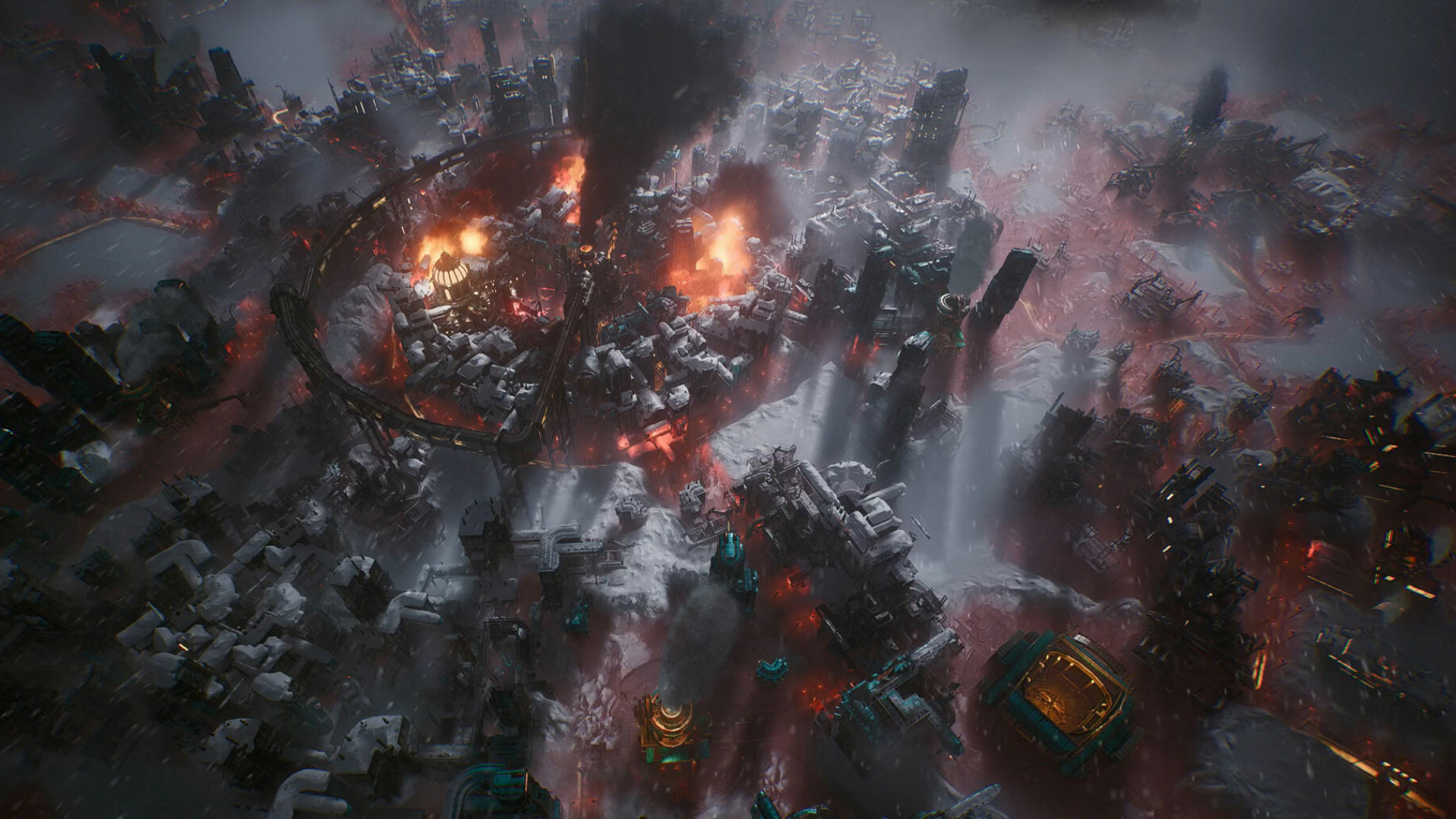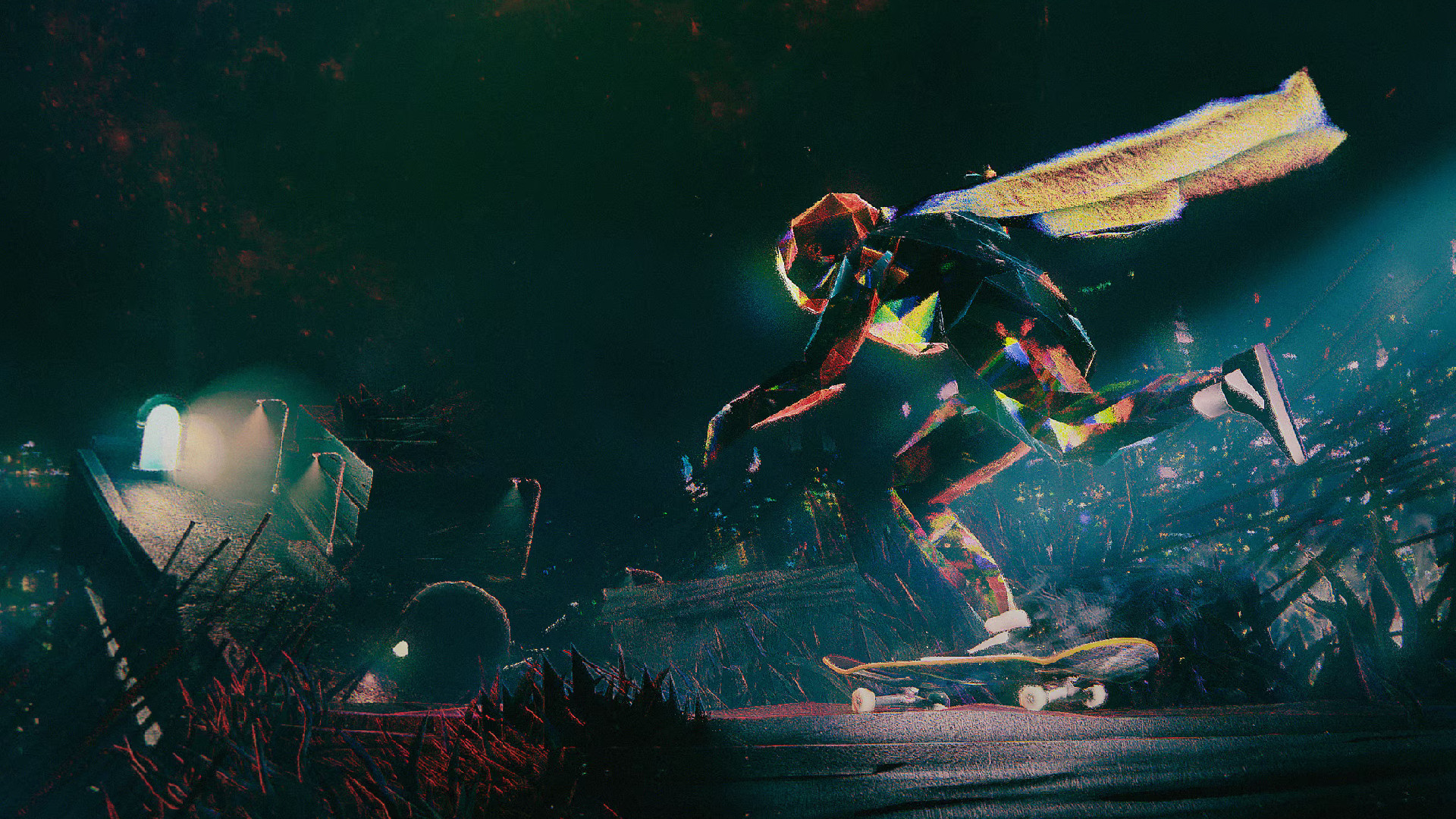GamesRadar+ Verdict
Frostpunk 2 successfully expands on everything that the original brutal city builder had, and its larger scale, great story campaign, and new faction system are as "fun" as a calamity reduction simulator can get.
Pros
- +
Excellent story mode that teaches gameplay thoroughly
- +
Factions add a challenging political layer to the city building
- +
Clear communication around resource management
Cons
- -
Multiple settlements feels more burdensome than challenging
Why you can trust GamesRadar+
Just in time for the seasons to change and the weather to remain alarmingly warm, the follow-up to 2018's remarkable sci-fi parable about the absolute worst case climate change scenario arrives to spread some existential dread. Frostpunk 2 is a near-perfect example of how to do a sequel that both captures the original's idea saliently, but borrows some more macro-level concepts from other big empire building games to create a new, challenging, and rewarding experience.
Frostpunk 2 takes place decades after your Captain in the original game gathers survivors to build the first settlement of the arctic wasteland capable of surviving civilization-ending mega-blizzards. Years of relative peace - or the closest thing that is possible in a world frozen with no thaw in sight - have allowed populations to grow and a society capable of other things outside of basic survival to sprout. Mechanically, this means Frostpunk 2 makes the jump from smaller-scale real-time tactics to nearly full-blown 4x proportions, trading individual building placement, day/night cycles, and small maps with different kinds of zoning, and months moving by in minutes. An expansive overworld begs players to plant their flag in other territories, potentially operating more than one settlement at once.
Instead of stumbling on a lone generator out in the tundra, Frostpunk 2's story mode asked me to pick up the pieces of a crumbling New London as the super settlement from the previous game was rapidly falling into disrepair after the loss of its old Captain. At its most elemental, it requires the same diligent resource collecting and production management while also keeping my people warm, fed, and healthy. Where the original game focused on sending a handful of people out into head-high snow drifts to find scraps, Frostpunk 2 lays down more organized industrial operations from the start.
Cold comfort
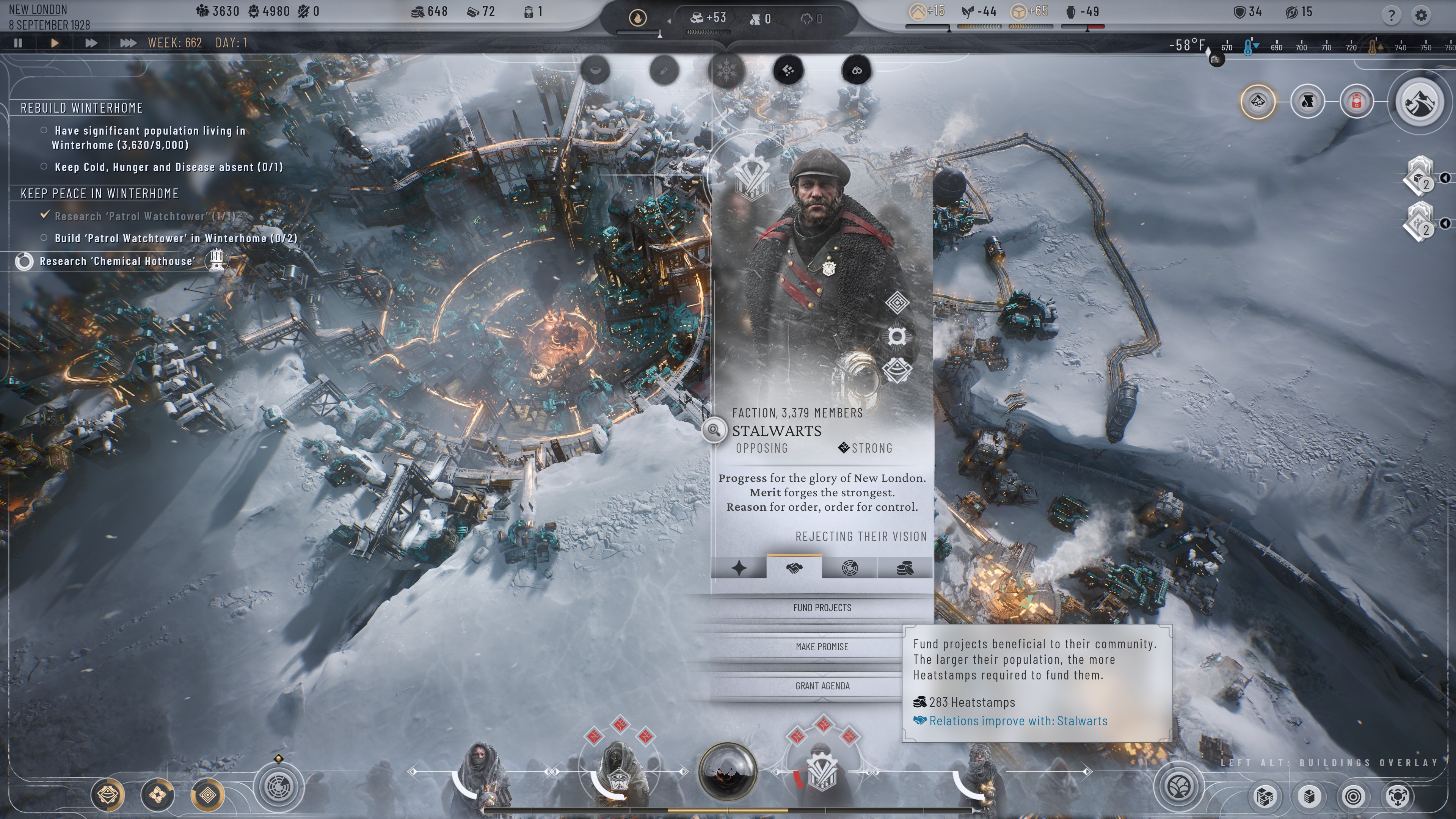
Release date: September 20, 2024
Platform(s): PC (with PS5 and Xbox Series X announced as still to come)
Developer: 11 bit studios
Publisher: 11 bit studios
Icons on the map identify regions that hold fuel to dig up, wood to chop, or plant-worthy soil to work, and painting over them with the proper type of district builds the appropriate set of buildings to get the stuff into your storage, their workforce needs regularly measured in the hundreds instead of the tens. These districts can be expanded over time, and become home to the sorts of specialty buildings that spiced up the first, like the Research Institutes and Hospitals. The scale up does make keeping track of these production centers easier.
Even though time moved faster, these points had way more total yield and tooltips that kept me aware of when they are drying up well before they do. It can be tricky to get the hang of all of the district buildings and when it's better to expand versus building out a whole new zone. The latter is something I picked up over time, but a dozen hours into my New London revival concert, I still hadn't fully wrapped my head around the information overload of all the potential risks and benefits of these new locations.
Not every new addition to the basic setup feels impactful. A new secondary resource, goods, is supposed to be a representation that society is far enough away from extinction that they can start enjoying tchotchkes again, but I only ever had enough of these to meet demand for one five-minute stretch over the many hours it took me to beat the story, and I never felt a consequence for it or a pressure to create the extra district necessary to make more.
People get more of a focus this time around. Workforce requirements for any project is usually significant, so keeping people healthy is of extra emphasis. In the tragic event that you are not able to meet their vital needs, Frostpunk 2 seems more forgiving about when they start to pay the price and how expensive it is. But since people are the rarest resource here, any loss of them hits hard. Outside of their gameplay role, they are presented with far more individuality and reverence than they were in the past. Every so often when a problem or concern arises, it's usually a large, well-rendered, solemn face with pain in their eyes asking me to fix it. The dark social commentary doesn't really hit as hard this time around, but that might be more because our real world feels a little darker than it did six years ago, and not due to some significant change in 11 bit's style of storytelling. The grim retro-futuristic Victorian buildings and characters still present a wholly unique steampunk-adjacent aesthetic, properly capturing a world that got frozen in time in the last century, as well as the many little innovations humanity made since then. It's just hard to wax too poetically about its brutality when there seems to be so much of our own to consider.
Weekly digests, tales from the communities you love, and more
Chilly relationship
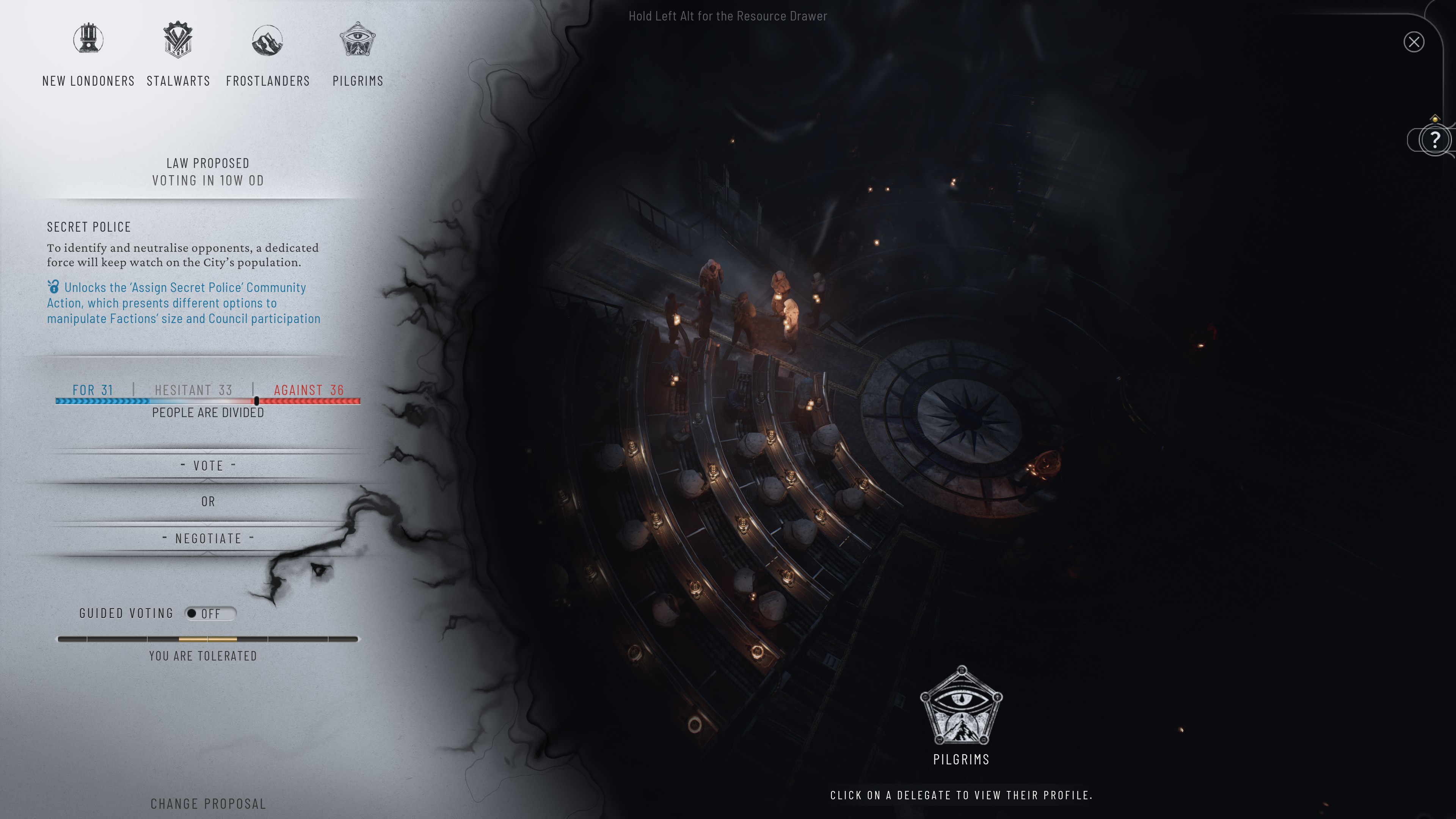
The balance of making sure all of my bases were covered was still tenuous, but far more manageable out of the gate thanks to Frostpunk 2's excellent story mode. Its objectives do did double duty: provided a puzzle of city management that grew in difficulty over its five chapters, and were clear and clever ways to introduce all the assorted mechanics and troubles I would face if I left the campaign and attempted to grow a city from scratch in the free play mode, nudging me towards valuable evergreen strategies on the way). Frostpunk 2 is not always clear on how to do some specifics – the tutorial tooltips have some blindspots on how to find specific actions buried deep in menus or explaining why a production would suddenly stop midway – but it's great at making sure I wasn't idling too much by always presenting some next big challenge to conquer.
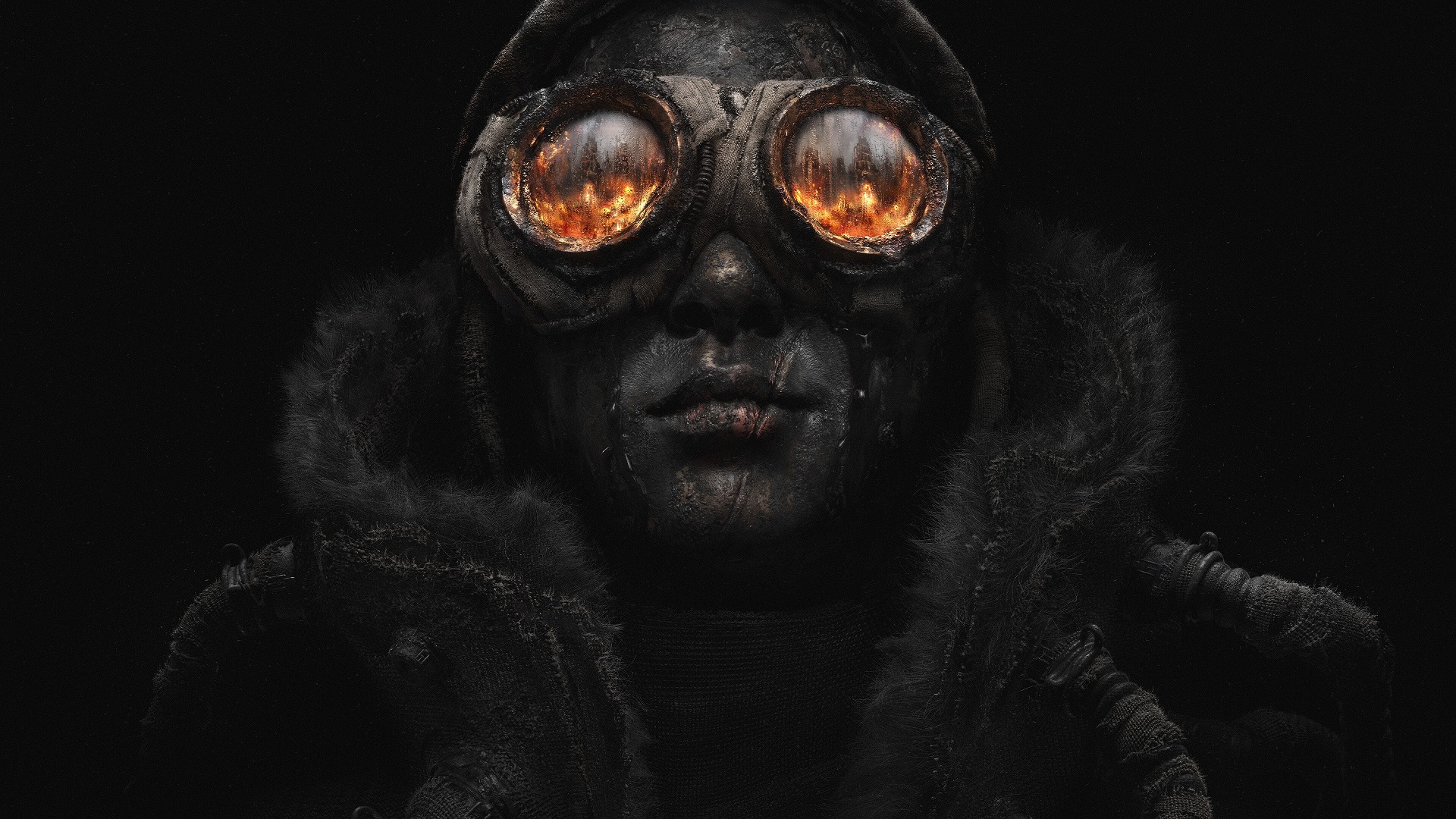
I spent two hours in Frostpunk 2 and the children only went feral once, so I'm taking that as a win
Governing people in the original Frostpunk took my moral compass for a spin, but Frostpunk 2 does everything it possibly can to break it altogether. In the prior game, every decision felt like it came with pros and cons that hit most of the population with the same weight, ultimately making the whole experience a matter of choosing the pros that overall have more impact than the cons. But the 30 years between the brink of eradication and the fictional now has given the citizenry time to imagine what the future of civilization could look like, and they've divided themselves into factions based on those beliefs. Almost everything I did had some sort of consequence on one or more of these factions, usually with at least one liking it and one hating it. The efficiencies of fracking oil out of the frozen soil might please the technocratic Stalwarts but it's dangerous and the traditionalist Pilgrims will disapprove. Anger a faction enough and they will start to cause unrest in the settlement, potentially trying to actively sabotage your future projects or overthrow you completely.
The temperaments of each faction significantly impacted my ability to pass new laws in the settlement, too. No longer could I just do so with impunity like the original game. These factions combine to create a parliament that must vote on every proposal with the likelihood of my proposal passing determined by how many of these councilmen believed in my leadership and how many could be swayed to vote in my interests for favors in return. Every vote, even the ones that seemed to go reasonably my way, felt tense. It made trying to get things done a real struggle, but I really came to appreciate just how much trouble they can cause. Around the midway point and beyond in the campaign, I spent a lot of time granting favors and donating resources to individual factions in order to keep them compliant, years of barking back and forth between them all whittling down their tolerance for one another and their faith in me. Many of the choices you make are reversible or fixable in some fashion if you have the will, and a select few are not, and I think often about how things could have been had I made different choices or favored different factions.

Exploring outside the confines of my main settlement is a much larger endeavor in Frostpunk 2. Scouts still adventure out into the tundra to find resources and survivors, but they search by regions instead of individual points. Once scouts make it to the region, they report back a set of points of interest that could reveal stockpiles, people, or outpost opportunities that create semi-permanent access to a particular resource. This time around, I also got opportunities to create secondary settlements like an oil field that I used to drill and ship the fuel back to my main city. These locations had their own populations, workforces, and resource needs separate from my other settlements, so if they couldn't gather or create all of the things they needed, my other settlements had to come together to fill the gaps.
This is really the only time Frostpunk 2's expanded scope felt consistently unwieldy. Bouncing back and forth between settlements to move resources around just so that they could survive another few months was tedious. It felt like I was mostly just treading water and not actually progressing, which was frustrating and not in the ultimately fun and thought-provoking way that the rest of the game can be frustrating. I'm sure that this is something that takes practice to master, but at around a dozen hours in, imagining how much time I'd need to spend to "get good" at settlements puts my brain in a deep freeze.
Frostpunk 2 is the most engrossing city builder I've played since the first. Though its moral quandaries don't pull at the heartstrings as hard as it did back in "simpler" times, it challenges the mind just as sternly thanks to the expanded management systems and scope, the need to manage factions and politics on top of individual needs, and a great story mode that taught it all to me. Even if some systems get a little obtuse, or if expanding the balancing act to multiple settlements became a progress-trapping burden, rescuing humanity through urban planning and political gamesmanship has never been this enriching. I'd normally not recommend sprinting towards the opportunity to run a potentially fascistic post-apocalypse nation that might require you to mandate children leave school and become woodworkers, but let Frostpunk 2 be the exception.
Frostpunk 2 was reviewed on PC, with a code provided by the publisher.

Jarrett is a freelance writer with a video games-centered beat with over a decade of conversations and critiques about all things bleeps and bloops.
